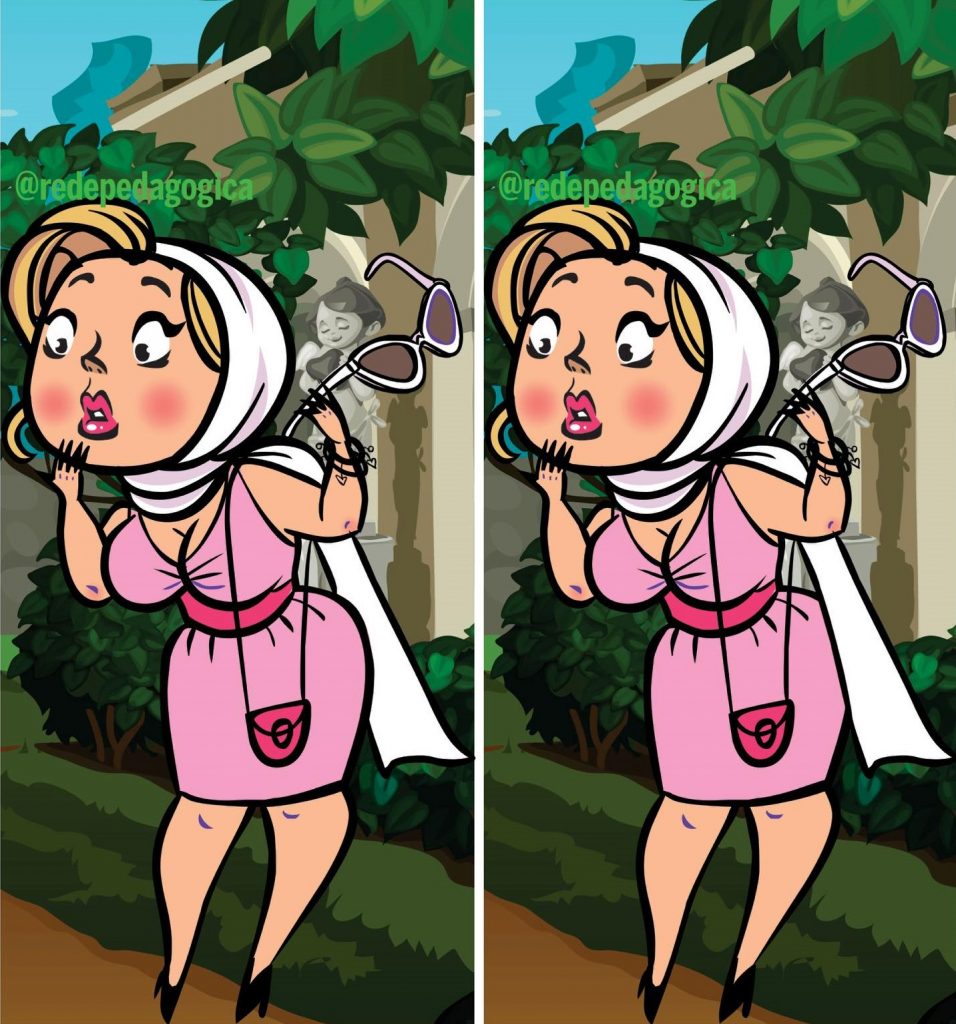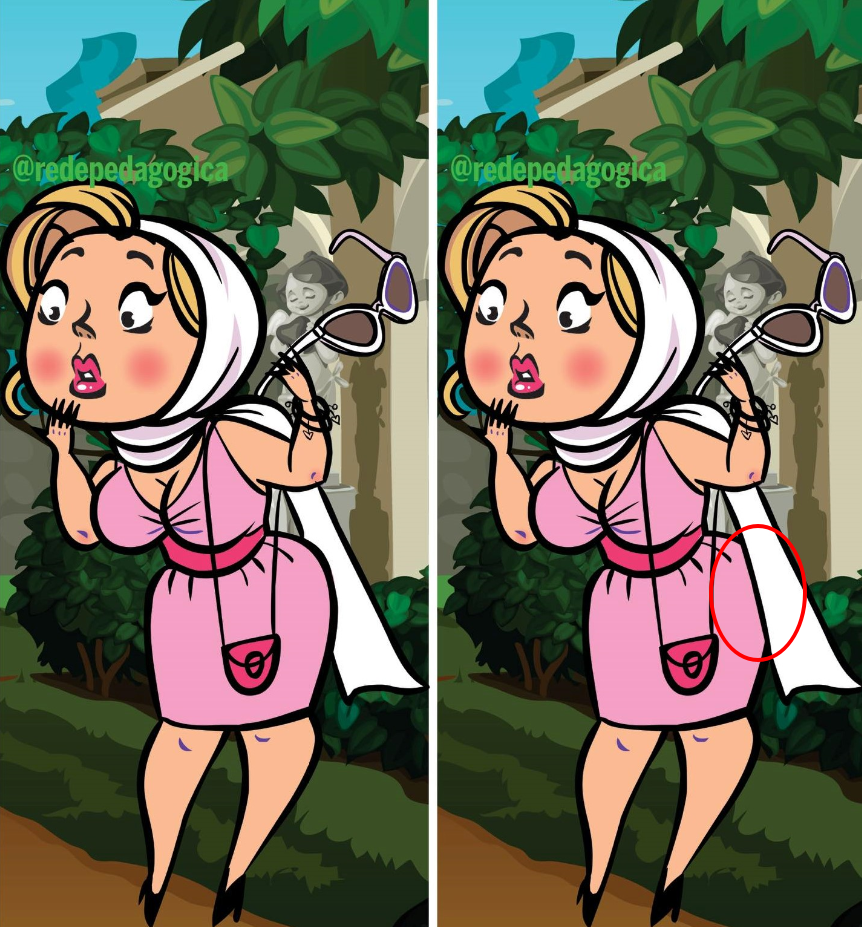Spot the Difference: A Fun Way to Train Your Brain and Sharpen Focus
“Spot the difference” puzzles have been a popular pastime for ages. Whether you’re solving them in a magazine, an app, or even as a part of your favorite puzzle book, these games are more than just a way to pass the time. They’re an excellent exercise for your brain. In this article, we’ll explore how these puzzles, which challenge you to find subtle differences between two seemingly identical images, can help you improve your focus, attention to detail, and cognitive functions.

What Are “Spot the Difference” Puzzles?
“Spot the difference” puzzles are deceptively simple at first glance. You’re given two images that appear similar, but upon closer inspection, they contain small, deliberate differences. Your task is to identify those differences—whether it’s a missing object, a change in color, or a flipped element. These puzzles can be found in various formats, from physical puzzle books to online games, and are often used as a fun challenge to keep your brain engaged.
For example, in the image above, a woman is holding a handbag and a pair of glasses, seemingly walking through a garden. At first glance, both images appear identical, but there are subtle differences waiting to be discovered. Whether it’s the color of the handbag strap or an object in the background, these minute changes make the puzzle both fun and mentally stimulating.
Boosting Attention to Detail
One of the most immediate benefits of playing “spot the difference” puzzles is that they train your brain to pay closer attention to details. These puzzles require you to zoom in on specific areas of the image, ensuring you don’t miss any subtle variations. By practicing this regularly, your ability to notice small changes and details improves, and this skill can be applied to other aspects of life.
Think about it: whether you’re reviewing a report, analyzing a presentation, or simply observing people around you, the enhanced focus from “spot the difference” puzzles helps you notice things that others might miss. This skill translates into real-life situations, making you more attentive in both professional and personal settings.

Sharpening Visual Processing Skills
“Spot the difference” puzzles are also a fantastic way to improve your visual processing skills. To identify differences, you need to quickly process and analyze visual information. The brain needs to distinguish between similar-looking details, such as shapes, sizes, and positions, to uncover what’s changed. With regular practice, your brain becomes faster and more efficient at processing visual data.
For example, when comparing the images of the woman with the glasses, the change could be in the direction the glasses are facing or the position of a small detail on the background. Your ability to quickly and accurately spot these differences exercises your visual perception, which can be useful in a variety of contexts, from reading and interpreting images to even driving or navigating.
Memory Enhancement Through Puzzle Solving
Another unexpected benefit of playing “spot the difference” puzzles is the improvement in memory retention. In order to find the differences, you need to remember specific details from one image and compare them to another. This strengthens your memory, particularly your visual memory, as you train your brain to retain visual cues and details over a short period of time.
In the example above, as you compare the two pictures, you’ll rely on memory to recall what the original image looked like. This practice not only helps you remember where specific elements are in a picture, but it also sharpens your overall memory retention. Over time, your ability to remember visual information improves, which can benefit you in everyday situations, such as remembering faces, locations, or facts.

Critical Thinking and Problem Solving
Solving “spot the difference” puzzles is not just about recognizing visual cues—it also requires critical thinking and problem-solving. You need to break down the image into sections, identify where the differences are most likely to be, and then focus on those areas. This process involves strategic thinking, where you prioritize different sections of the puzzle and solve them one by one.
This problem-solving skill is incredibly valuable outside of puzzle-solving. Whether you’re tackling a complicated task at work, organizing a complex project, or making important decisions in your personal life, the ability to analyze and break things down into manageable parts is a crucial skill that can help you approach challenges in a more organized and efficient way.
Stress Relief and Mental Clarity
While “spot the difference” puzzles are mentally stimulating, they can also serve as a form of stress relief. Engaging in these puzzles forces you to concentrate on something other than the stressors of daily life, helping you disconnect and unwind. The mental focus required provides a calming effect, which can help you reset and reduce anxiety.
Just like other mindfulness activities, such as meditation, solving puzzles allows you to focus completely on the present moment. By concentrating on the task at hand, you block out distractions and worries, helping you refresh your mind and approach the rest of your day with more clarity and focus.

Building Patience and Persistence
Another often-overlooked benefit of “spot the difference” puzzles is that they help build patience. Some differences are easy to spot, while others are more challenging, requiring you to spend more time carefully analyzing the images. This process teaches you how to be patient and persistent, especially when the solution isn’t immediately apparent.
The persistence required to complete these puzzles mirrors the determination you need in real life. Whether you’re tackling a long-term project or dealing with challenges at work or home, the patience you develop while solving puzzles can help you persevere, even when the road is tough.
Fostering Creativity and Imagination
In addition to improving focus and memory, “spot the difference” puzzles also foster creativity. As you examine two similar images, your brain begins to visualize different possibilities for the differences. You may start imagining how changes could be made in the image, which helps nurture creative thinking.
The creativity involved in “spot the difference” puzzles can extend to other areas of life. It encourages you to think outside the box and approach problems with a fresh perspective. Whether you’re coming up with innovative solutions at work or brainstorming ideas for a new project, this creative thinking can lead to new ways of tackling challenges and finding solutions.

Conclusion: More Than Just a Fun Activity
“Spot the difference” puzzles are much more than just a fun distraction. They are a fantastic way to engage your brain and improve cognitive skills. From enhancing your focus and memory to boosting your problem-solving abilities and creativity, these puzzles offer a mental workout that benefits your mind in numerous ways. So, the next time you need a break or want to exercise your brain, grab a “spot the difference” puzzle and dive in. You’ll not only enjoy the challenge but also reap the rewards of a sharper, more focused mind.





